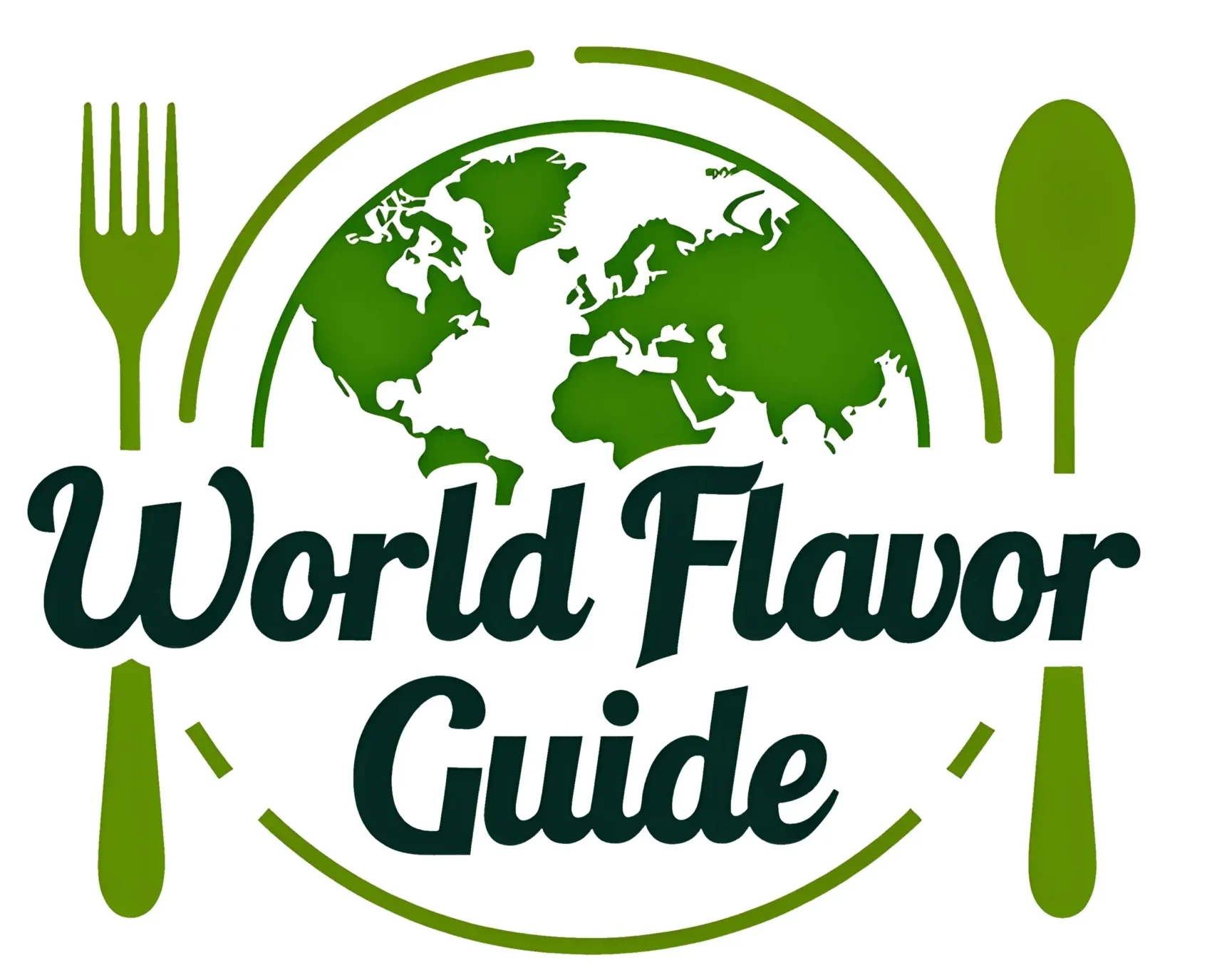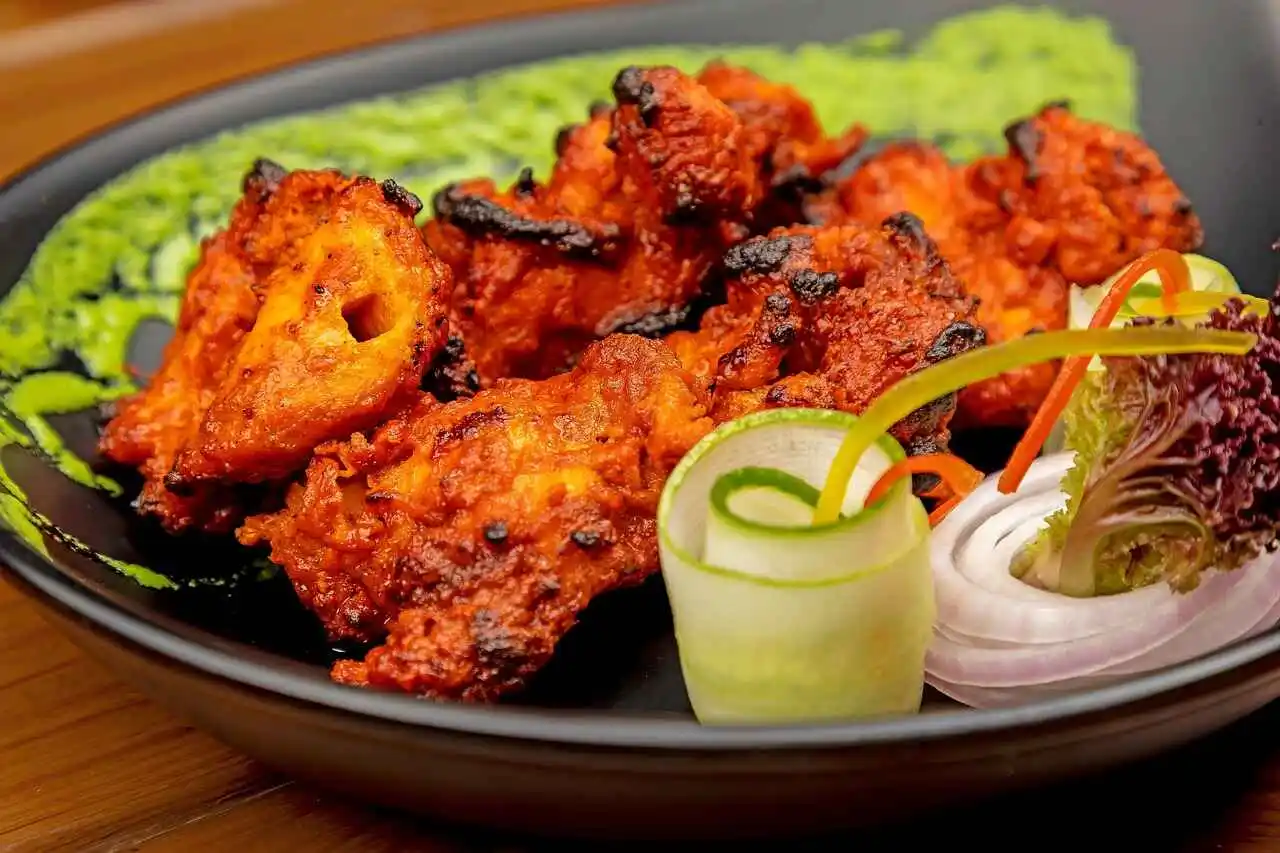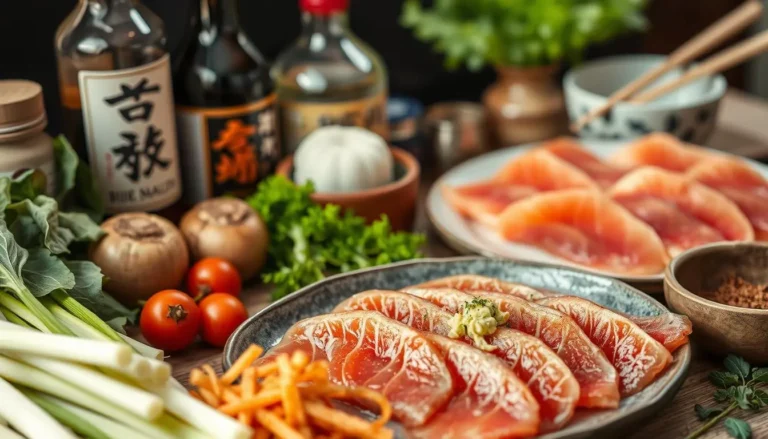American Cooking: Discovering Native and African Influences
Often referred to as a melting pot, American food is a rich tapestry spun from the culinary customs of nations. Its variety reflects migration, history, and the mixing of many cultural influences. Among the many ethnicities that have shaped American cooking, two are particularly noteworthy for their significant contributions: Native American and African cuisines. These two civilizations brought unique ingredients and methods and greatly influenced what we today define as quintessentially American.
Table of Contents
Native American-Inspired American Cooking
The first people to live in what we now know as the United States were Native Americans, and their dietary customs, farming methods, and cooking style set the foundation for most of American cuisine. Native Americans lived by growing food and using natural resources from their surroundings long before European immigrants arrived. Still, key staples brought by Native Americans are essential to the present American diet.
Native American Ingredients
Native Americans raised a variety of foods that are still heavily included in modern American cuisine. Among the most noteworthy offerings are
- Corn (Maize): For many Native American tribes, corn (maize) was a staple crop whose adaptability significantly impacted American food. Whether used as a tortilla base or as cornmeal in dishes like cornbread, corn’s Native roots are reflected in American cuisine.
- Beans and Squash: Together with corn, beans and squash make the “Three Sisters,” a trio of plants usually grown with a comprehensive nutritional profile. Modern cuisine and Native-inspired stews both call for these items.
- Wild Rice: Native to the Great Lakes, wild rice was prized by Native Americans and has grown to be a highly sought-after component in American cooking.
- Maple Syrup: Native Americans were the first to harvest maple trees and produce the syrup, a staple American sweetener today.
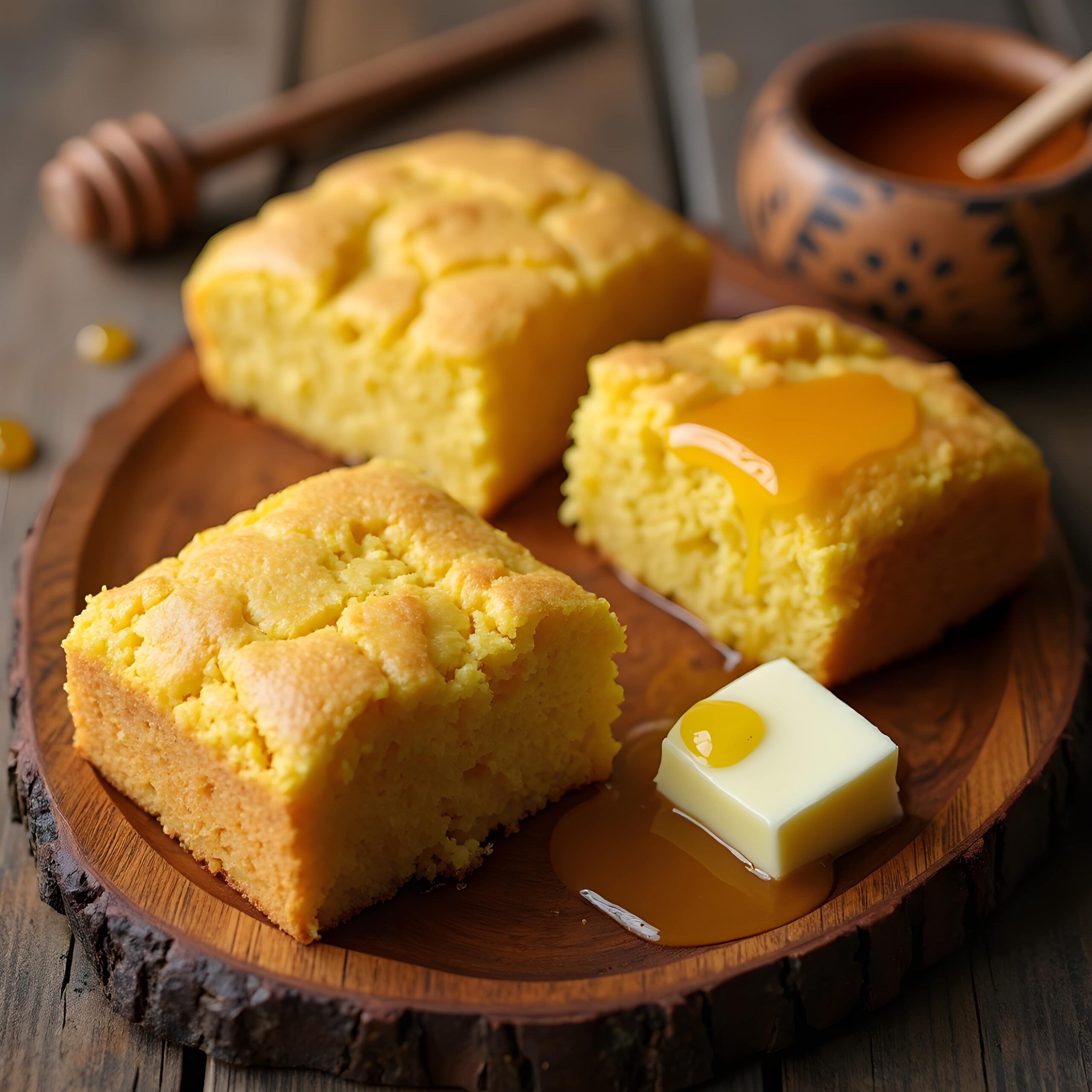
Cooking Methods and Tools
Beyond only materials, Native Americans brought cooking methods and procedures still used in American cuisine:
- Smoking and Drying: Preserving meat and fish by smoking and drying ensured food would be available all year round. This method influenced the development of smoked barbecue, which later became an American specialty.
- One-Pot Meals: Native Americans cooked filling one-pot dinners with boiling beans, squash, and meat. Today, foods like varieties of vegetable stews and succotash remind us of these early recipes.
Signature Dish Highlight
Cornbread is a classic American meal that originated with Native Americans’ use of ground corn. Originally cooked over open flames or hot stones, it remains a staple in the Southern United States and is often served with dishes ranging from barbecue to chili.
Native Americans permanently changed American cuisine by combining these crops and methods.
African Impact on American Cooking
Millions of Africans carried by the transatlantic slave trade arrived in America accompanied by their rich cooking customs. Although enslaved Africans had great difficulty maintaining their legacy, their creativity and resourcefulness helped them to bring their tastes and methods into the developing American cuisine. Keystones of America’s culinary character, Southern and soul food cuisines, clearly show African influence.
African Ingredients
Along with expertise in culinary techniques employing locally accessible substitutes in the United States, African cuisine provided native foods. Still central in American cuisine are these ingredients:
- Okra: Originally a mainstay of many African meals, okra is a green pod vegetable that became fundamental to Southern cooking. Gumbo, a meal with strong African and Creole elements, is the most common preparation.
- Black-Eyed Peas: Often associated with success and prosperity in African traditions, black-eyed peas have found their way into Southern dishes like Hoppin’ John.
- Collard Greens: Often slow-cooked and seasoned with onions, garlic, and smoked meat, collards were a staple of African foodways accepted in the Southern U.S.
- Watermelon and Yams: Grown in great abundance in Africa, watermelon and yams are staples of African-American cooking customs and more general American cuisine.
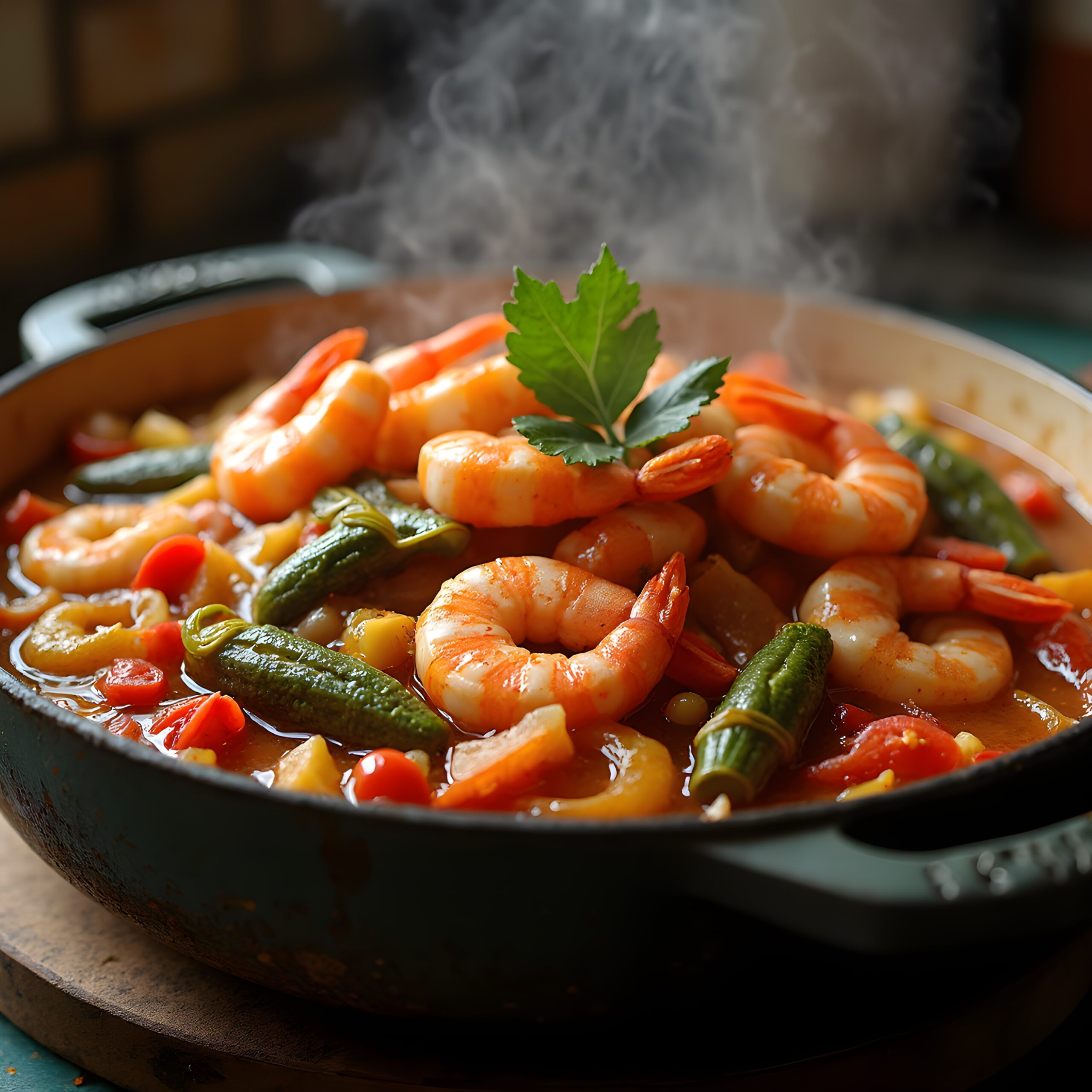
Cooking Methods and Tools
Enslaved Africans developed new dishes and techniques that have remained culinary mainstays today by customizing classic recipes to the ingredients at hand in America:
- Spices and Bold Flavors: African cuisine relies on strong, complex flavors, which are also a hallmark of well-known American dishes like fiery stews and barbecue.
- Deep-frying: Rooted in African cooking, deep-frying meats and vegetables became a defining feature of Southern cuisine. Now a staple of American comfort cuisine, fried chicken originated in African customs.
- Gumbo & Stews: Creole and Cajun cooking reflect African influences. A filling stew, gumbo combines okra and filé powder, standard components in African cooking.
Signature Recipe Highlight
Strong African roots abound in the classic Southern cuisine known as gumbo. It’s communal, one-pot cooking and use of okra as a thickening agent highlight its African roots while combining European and Native American influences over time.
African cuisine’s flavors, methods, and resiliency have formed what we honor as soul food today and have impacted more general characteristics of American eating.
American Cuisine’s Cultural Fusion
Though they have also melded into distinctly American fusion cuisine, Native American and African influences flourish naturally. Foods like cornbread, Cajun jambalaya, and Southern barbecue are clear mirror images of this culinary junction.
These complex customs are kept alive today in part due to cultural fusion. From Native and African inspirations to honor their traditions and cater to current preferences, chefs and home cooks experiment with recipes.
Pictures to Support the Story
- Native American Inspiration: A vivid platter of cornbread accompanied with butter and honey.
- African Influence: A pot of okra gumbo cooked with clearly visible vegetables and prawns.
- Native American Agriculture: Close-up of a Native American Three Sisters agricultural plot (corn, beans, and squash growing side by side).
- Southern Cooking: Collard greens, seasoned with smoked pork and onions, are prepared in Southern fashion.
Final Notes
Native American and African inspirations define American food. These civilizations made gastronomic and symbolic contributions of tenacity, inventiveness, and diversity. The entire basis of what we consume nowadays is the foods, recipes, and techniques Native Americans and enslaved Africans brought.
